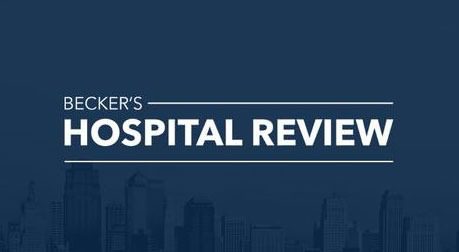
Reverse town halls, rotating schedules: How hospitals accommodate overnight staff – Becker’s Hospital Review | Healthcare News
Workers across industries are experiencing the “infinite workday,” as meetings starting after 8 p.m. have increased 16% year over year, according to a Microsoft 365 report.
One contributing factor is a 35% rise in meetings across multiple time zones since 2021, which now account for nearly one-third of all meetings.
While healthcare may not be necessarily seeing the same shift, several hospitals and health systems are rethinking meeting schedules to better accommodate overnight staff and colleagues in other time zones.
A Becker’s LinkedIn poll, which garnered 1,451 responses between July 15 and 22, asked: How often are you involved in meetings outside of traditional working hours (before 8 a.m. or after 6 p.m.)?
“Rarely” was the most common response at 43%, followed by “a few times a week” at 31%, “never” at 17% and “daily” at 8%. Becker’s has no insights on respondents’ organizations or roles.
To explore how hospitals and health systems are adjusting meeting times, Becker’s connected with eight leaders about recent changes aimed at supporting overnight staff and geographically dispersed teams — including virtual options and rotating schedules.
Editor’s note: Responses have been lightly edited for clarity and length.
Marilee Arnold, BSN, RN. Vice President of Patient Care Services and Chief Nursing Officer for UNC Health Pardee (Hendersonville, N.C.): Virtual access and flexible times.
When supporting overnight staff, it’s important to recognize what their lives look like when they leave the hospital — many are heading home to care for families or prepare for the next shift. We’ve found that offering flexible meeting times, like just after night shift or right before the next one starts, along with virtual access, has helped increase participation. It’s not the same as in-person connection, but it’s far better than meetings where only a small fraction can attend. By listening to each team and adjusting based on their needs, we’ve created more inclusive and engaging opportunities for collaboration.
Gerard Colman, PhD. CEO of Baptist Health (Louisville, Ky.): Systemwide e-newsletter to strengthen communication.
We’ve continuously strengthened communication through a weekly systemwide e-newsletter that keeps all staff informed about key initiatives, events, leadership updates and opportunities for collaboration. All team members are encouraged to share ideas and feedback, supporting our Just Culture where input is welcomed and every individual feels respected. Department leaders also help amplify voices and host departmental meetings to share key updates and create space for open dialogue with team members, enhancing engagement across our workforce.
Christy Escandon, MSN. Chief Nursing Officer for Lovelace Regional Hospital (Roswell, N.M.): Meeting team members where they are.
At Lovelace Regional Hospital, we have implemented a philosophy of “meeting them where they are” and provide live meetings, such as town halls, with our night shift staff. Our leaders also consistently schedule office time on those night shifts and we use our house supervisors to reinforce key messages and initiatives. Face-to-face communication drives more engagement than any other medium, and our leaders stay engaged with secure messaging applications to communicate real-time information when needed.
Nicki Gamet, BSN. Chief Nursing Officer for Mercy Springfield (Mo.) Communities: A combination of in-person rounding and virtual meeting options.
There is a strong commitment to ensuring communication reaches our entire nursing staff no matter their shift time or location. We’ve implemented huddles during both day and night shifts to ensure key messages are consistently cascaded, and we also hold town halls during day and night shifts to reach more caregivers. Not only does this allow us to meet teams where they are — on the units, during their shifts — but it gives us a chance to hear directly from our caregivers in real time. These combined efforts including flexible scheduling, in-person rounding and virtual meeting options, help us build a more connected and engaged nursing team, regardless of where or when they work.
Martha Henley. CEO of Unity Medical Center (Manchester, Tenn.): Rotating staff meeting times.
I’ve made it a priority to ensure that our communication and engagement strategies reflect the realities of a 24/7 care environment. At Unity Medical Center, one of the most effective changes we’ve implemented is encouraging our department directors to rotate their staff meeting times throughout the month. Switching between early mornings, evenings or weekends for these meetings ensures that every team member, including those on night shifts or alternate schedules, has an opportunity to be included in meaningful discussions.
This simple yet strategic shift has not only improved information flow but also fostered a stronger sense of belonging among staff who could have previously felt left out of traditional operations. It also empowered our directors to be more intentional and flexible in their leadership approach. By decentralizing this responsibility, we have created a culture where engagement is not just top-down. It’s built into every level of our organization. That flexibility has become one of our greatest strengths in improving collaboration and overall staff satisfaction.
Catharine MacLaren, PhD. Vice President of Human Resources, Talent and Workforce Development at Northern Light Health (Brewer, Maine): Early morning meetings and late-day town halls.
Northern Light Health has implemented some tactics that have proven helpful in engaging those who work outside conventional work day hours, including offering systemwide town halls late in the day to allow more than one shift to participate and recording and posting those recordings so that others can view anytime. Senior leaders have adjusted their schedules to be able to round with various shifts. In addition, there are early morning meetings scheduled to potentially capture those coming off of night shifts and those starting their work day. Training opportunities are also offered in the evenings and on weekends.
Amanda Noth-Matchett, PhD, RN. Chief Nursing Officer of IU Health Methodist and University hospitals (Indianapolis): Assistant nurse manager role with 40% of their time dedicated to off-shifts.
At Indiana University Health’s Methodist and University hospitals in downtown Indianapolis, many units offer virtual options for staff meetings, professional governance councils and beyond to support increased engagement for team members on all shifts. We added an assistant nurse manager role with the expectation that 40% of their scheduled time would be on off-shifts to provide increased leader support to our team members on those shifts. Specific to my role as CNO, we created a “CNO Breakfast” series intentionally scheduled at 0730 to hear from both night shift and day shift team members. Also, I have a communication cascade that includes video messaging to increase visibility and provide connection in an on demand format.
Cheryl Paul, MSN, RN. Chief Nursing Officer at Bon Secours St. Francis Medical Center (Midlothian, Va.): Reverse town halls.
We’ve shifted from asking teams to come to us to bringing meetings directly to them. At Bon Secours St. Francis Medical Center, we’ve implemented “reverse town halls,” rounding on departments early in the morning to better engage the night-shift and gather feedback on what they need from leadership. We’ve also added digital feedback tools, such as QR codes for on-demand input, and conduct an annual “Start, Stop, Continue” survey to ensure our meeting formats and topics strengthen collaboration across all shifts and satellite campuses.



